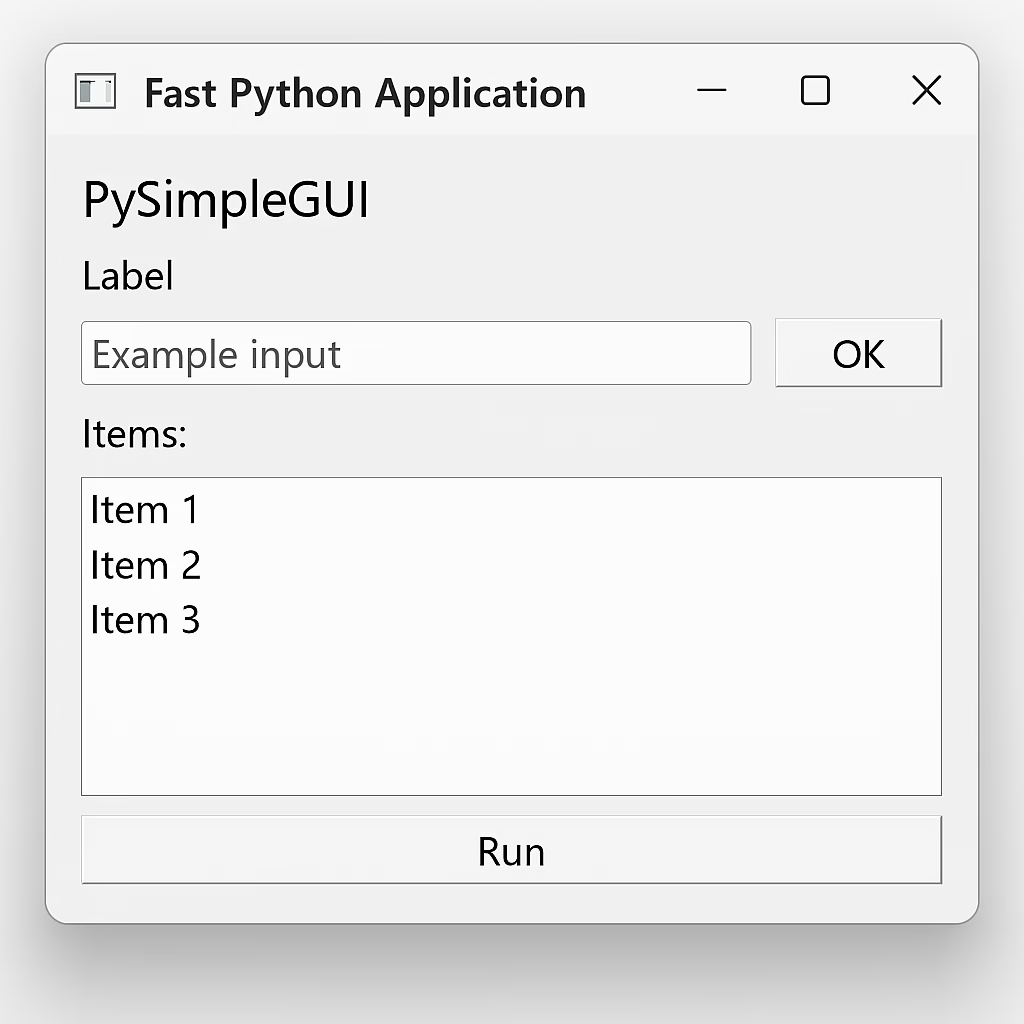Introduction
Python is a powerful programming language that allows you to create desktop applications with ease. However, some Python applications tend to run slow due to inefficient code or heavy libraries. In this guide, we will explore the best ways to build a fast and efficient Python desktop application using lightweight libraries and optimized techniques.
Choosing the Right GUI Library
The choice of the Graphical User Interface (GUI) framework greatly affects the speed of your application. Some popular options include:
- PyQt – Feature-rich but heavy.
- Tkinter – Lightweight but limited in design.
- PySide – Similar to PyQt but more flexible.
- PyGObject (GTK) – Good for Linux but slightly complex.
- Dear PyGui – Fastest GUI library for Python.
For this guide, we will use Dear PyGui, as it is designed for high performance and speed.
Setting Up the Environment
Before we begin, ensure that Python is installed. You can install Dear PyGui using the following command:
pip install dearpygui
Now, let’s create a simple desktop application using Dear PyGui.
Creating a Simple Python Desktop Application

Here’s a basic example to create a fast, lightweight GUI:
import dearpygui.dearpygui as dpg
dpg.create_context()
def on_button_click():
print("Button clicked!")
dpg.create_viewport(title='Fast Python App', width=600, height=400)
dpg.setup_dearpygui()
with dpg.window(label="Main Window"):
dpg.add_text("Welcome to Fast Python App!")
dpg.add_button(label="Click Me", callback=on_button_click)
dpg.show_viewport()
dpg.start_dearpygui()
dpg.destroy_context()
Explanation:
create_context()– Initializes Dear PyGui.create_viewport()– Sets up the main window.setup_dearpygui()– Prepares the GUI framework.add_text()– Displays text on the window.add_button()– Adds a button with a callback function.show_viewport()– Renders the application.start_dearpygui()– Runs the event loop.
Optimizing Performance
To make the application run even faster, follow these best practices:
1. Use Compiled Python
Python is an interpreted language, but you can convert it to a compiled executable for faster performance using PyInstaller:
pip install pyinstaller
pyinstaller --onefile --noconsole app.py
2. Use Asynchronous Programming
Avoid blocking the UI by using async functions:
import asyncio
async def background_task():
while True:
print("Running in the background...")
await asyncio.sleep(2)
3. Reduce Unnecessary Computation
Avoid unnecessary loops and use NumPy for faster calculations:
import numpy as np
large_array = np.random.rand(1000000)
mean_value = np.mean(large_array)
Packaging the Application
Once your application is complete, package it for distribution:
pyinstaller --onefile --windowed app.py
Conclusion
Building a fast Python desktop application requires choosing the right libraries, optimizing performance, and using compiled code. With Dear PyGui, async programming, and NumPy, you can create an efficient, high-speed application.
Would you like help in adding advanced features like database integration or multi-threading? Let me know in the comments!


